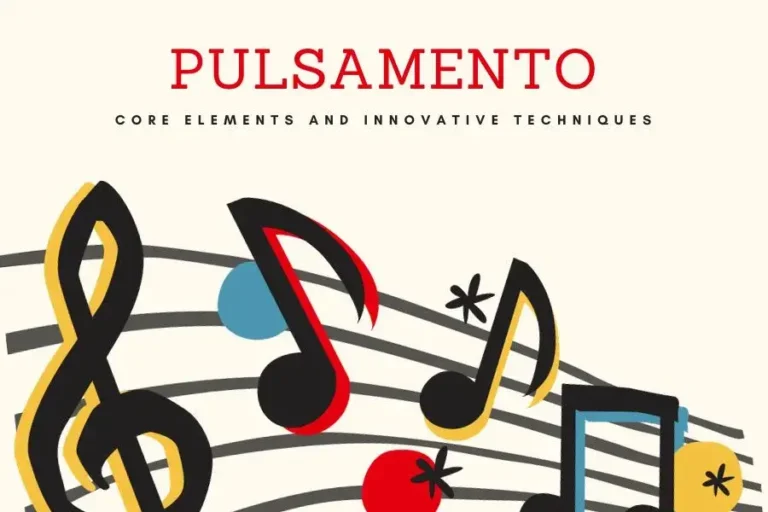Mama Ga Aitsu Ni Netora Reta: A Story of Unrequited Love

Unrequited love is a universal human experience that has been explored in various forms of storytelling throughout history. One such example is the manga series “Mama Ga Aitsu Ni Netora Reta,” written by Hiroki Tachibana and illustrated by Yuka Nagate.
In this captivating narrative, the author delves deep into the complex emotions and psychological impacts of unreciprocated feelings. The understanding of unrequited love, the main characters, the cultural setting, the narrative structure, and the main concepts and signs found in “Mama Ga Aitsu Ni Netora Reta” are only a few of the elements of the story that this page seeks to explore.
Understanding Unrequited Love
The experience of a person having solid emotional affection for another person who doesn’t share those emotions is known as unrequited love. It is the experience of loving someone while not feeling the same level of care or compassion in return.
In “Mama Ga Aitsu Ni Netora Reta,” the protagonist is caught in the painful grip of unrequited love, the driving force behind the story. Through the vivid depiction of the protagonist’s emotional journey, we gain a deeper understanding of the complexities surrounding unreciprocated feelings.
The Psychology Behind Unreciprocated Feelings
Unrequited love often leads individuals to question their self-worth and can result in various emotional responses. In “Mama Ga Aitsu Ni Netora Reta,” the protagonist’s intense longing for the object of her affection highlights the psychological toll that unrequited love can take.
The story explores the protagonist’s emotions, from adoration and hope to frustration and heartache. Through investigating the protagonist’s mind, the manga provides a sophisticated depiction of the challenges associated with unsatisfied love.
Furthermore, circumstances, such as past experiences, attachment patterns, and individual fears, could impact the psychology behind unreciprocated feelings. For example, people who have already been rejected might become more susceptible to poor confidence and insecurity when they experience unrequited love.
Furthermore, certain styles of attachment, such as anxious attachment, may increase the psychological impact of unrequited sentiments, causing increased anxiety and an insatiable desire for validation.
Furthermore, the psychology of unrequited affection can be significantly affected by one’s fears. It can be challenging for people who lack confidence to confront the rejection and unfulfilled dreams that come with unrequited love. These worries have the potential to worsen the already-existing mental health issue, creating a vicious cycle of desire and doubt about oneself.
The Emotional Impact of Unrequited Love
Unrequited love can have a profound impact on an individual’s emotional well-being. In “Mama Ga Aitsu Ni Netora Reta,” the author skillfully depicts the rollercoaster of emotions experienced by the protagonist.
The story captures the pain, longing, and desperation that often accompany unreciprocated love, showcasing the profound effects it can have on one’s mental and emotional state. Through the protagonist’s journey, readers are exposed to the raw emotions that echo the reality of unrequited love.
Moreover, the psychological consequences of missing out on love can surpass the immediate emotions of sorrow and yearning. It can impact an individual’s sense of self-worth, interactions with other people, and overall sense of happiness.
Constantly wanting an individual who doesn’t feel the same way about them can make a person feel inadequate and embarrassed, which lowers one’s self-esteem.
Unrequited love may influence someone’s ability to develop and keep beneficial relationships. Focusing on an unattainable love interest can prevent them from entirely investing in other potential romantic connections, leading to missed opportunities for genuine connections and emotional fulfillment.
Due to the individual’s incapacity to engage fully and be present in their interactions with others, this obsessive obsession can also put stress on already-existing connections and relationships.
In the end, suffering the psychological repercussions of unrequited love is complex and private. It can alter a person’s outlook on interactions, love, and feelings of worth.
Through exploring the protagonist’s emotional journey in “Mama Ga Aitsu Ni Netora Reta,” readers are invited to reflect on their own experiences with unrequited love and gain a deeper understanding of the profound effects it can have on one’s emotional well-being.
The Characters in Mama Ga Aitsu Ni Netora Reta
“Mama Ga Aitsu Ni Netora Reta” features richly developed characters, each with their struggles and motivations. The author provides:
- Insightful character analysis.
- Shedding light on the internal conflicts faced by the protagonist and the object of her affection.
- Giving readers a deeper understanding of their complexities.
Character Analysis: The Protagonist’s Struggle
The protagonist, Sakura, is a young woman in her early twenties who is entangled in the web of unrequited love. As we delve into her character analysis, we discover the depth of her emotions and the relentless pursuit of affection that consumes her every thought. Sakura fights merely an unfulfilled love affair but also her own doubts and rejection concerns.
Sakura’s eyes allow us to see her inner agony as she struggles with the contradicting sensations associated with loving someone who isn’t feeling the same way back.
Her path is accessible to people who have gone through comparable circumstances because of her personality analysis, and she offers valuable insight into the challenges faced by those coping with unrequited feelings.
Sakura’s personality assessment goes further into her emotional baggage, illuminating her wounds and previous encounters that have influenced her viewpoint on love. The investigation gives her character additional complexity, which makes it easier for readers to relate to her struggles as well as understand the difficulties she faces down the way.
Character Analysis: The Object of Affection
Akihiro, the object of Sakura’s affection, plays a pivotal role in unraveling the dynamics of unrequited love in “Mama Ga Aitsu Ni Netora Reta.” The character analysis delves into Akihiro’s mindset, capturing the complexities surrounding his decisions and actions.
As readers explore Akihiro’s character, they gain a deeper understanding of the factors that contribute to the unreciprocated nature of Sakura’s love. Akihiro’s struggles and motivations are revealed, painting a multidimensional picture of a character who is torn between his desires and the expectations placed upon him by society.
The character analysis also explores the external pressures that influence Akihiro’s choices, such as family expectations and societal norms. By delving into these factors, readers gain a more nuanced understanding of the challenges faced by individuals who find themselves at the center of unrequited love.
Overall, the character analysis of Akihiro adds a layer of complexity to the narrative, highlighting the intricate dynamics at play in the story. It invites readers to question their assumptions about unrequited love and encourages empathy toward characters caught in its emotional grip.
The Cultural Context of Mama Ga Aitsu Ni Netora Reta
“Mama Ga Aitsu Ni Netora Reta” is deeply rooted in Japanese cultural nuances, significantly influencing the story’s plot and character development. The manga explores the impact of societal expectations and traditions on love stories, shedding light on the intricate relationship between culture and personal choices.
Exploring Japanese Cultural Nuances in the Story
Through “Mama Ga Aitsu Ni Netora Reta,” readers observe how cultural norms can shape the perception and expression of love. The manga skillfully weaves cultural elements into the narrative, allowing readers to explore the influence of Japanese society on the characters’ actions and decisions. By highlighting these cultural nuances, the story broadens our horizons and deepens our understanding of the cultural context in which unrequited love unfolds.
One of the cultural nuances explored in the manga is the concept of “giri” and “ninjo.” In Japanese society, there is a strong emphasis on duty and obligation, known as “giri,” which often conflicts with personal desires and emotions, known as “ninjo.”
This conflict is evident in the story as the protagonist grapples with her feelings for someone other than her husband. The cultural expectation of loyalty and commitment to one’s spouse creates a complex emotional landscape for the characters, adding depth and tension to the narrative.
Another cultural aspect that plays a significant role in the story is the concept of “honne” and “tatemae.” In Japanese society, there is a distinction between one’s true feelings, known as “honor,” and the public face one presents to humanity, known as “tatemae.”
This duality is explored in the manga as the characters navigate their relationships and the expectations placed upon them. The tension between expressing their true desires and conforming to societal norms creates a compelling dynamic that reflects the complexities of Japanese culture.
The Role of Society in Shaping Love Stories
Love and relationships are often entangled with societal expectations and norms. In “Mama Ga Aitsu Ni Netora Reta,” society’s influence on the characters’ lives is evident. The story examines how societal pressure and traditional values shape their choices, complicating the intricate web of unrequited love.
By delving into this aspect, readers gain a better understanding of the external factors that contribute to the protagonist’s plight.
One aspect of Japanese society that influences the characters’ choices is maintaining harmony and avoiding conflict. In Japanese culture, the concept of “wa” emphasizes the value of group harmony and cooperation. As individuals negotiate their connections and frequently forgo their fulfillment in order to maintain peace within their social circles, this societal norm is investigated in the manga.
The conflict with one’s wishes and cultural norms gives the story its complexity and invites viewers to ponder the difficulties of love in an environment that is multicultural.
Furthermore, the manga delves into the role of gender expectations in shaping love stories. In Japanese society, there are traditional gender roles and expectations that influence how individuals express their emotions and navigate relationships. These gender dynamics are explored in “Mama Ga Aitsu Ni Netora Reta” as the characters grapple with societal expectations of what it means to be a wife, a mother, and a lover. Exploring these gendered expectations adds complexity to the story, highlighting how cultural norms can shape and constrain personal choices.
Overall, “Mama Ga Aitsu Ni Netora Reta” offers readers a deep dive into the cultural context of love and relationships in Japan. By exploring Japanese cultural nuances and the role of society in shaping love stories, the manga invites readers to reflect on the intricate interplay between culture and personal choices.
Through its rich storytelling and attention to cultural detail, the manga expands our understanding of love within a specific cultural context, leaving readers captivated and eager for more.
The Narrative Structure of Mama Ga Aitsu Ni Netora Reta
The author of “Mama Ga Aitsu Ni Netora Reta” employs various narrative techniques to enhance the storytelling, including flashbacks and foreshadowing. These elements not only add depth to the plot but also engage the reader, keeping them hooked throughout the manga.
The Use of Flashbacks in the Story
Flashbacks are a powerful narrative tool in “Mama Ga Aitsu Ni Netora Reta,” allowing readers to gain insight into the protagonist’s past experiences and how they have influenced her present situation.
The judicious use of flashbacks creates a layered storytelling experience, connecting the protagonist’s past and her unrequited love. By employing this technique, the manga enriches the narrative and captivates the reader.
The Role of Foreshadowing in Building Suspense
Foreshadowing is another narrative technique the author employs to heighten tension and anticipation in “Mama Ga Aitsu Ni Netora Reta.” The clever placement of subtle hints and clues throughout the story creates a sense of dramatic irony and engages the reader more deeply.
By building suspense through foreshadowing, the manga keeps readers eagerly turning the pages, eager to uncover the fate of the protagonist’s unrequited love.
Themes and Symbolism in Mama Ga Aitsu Ni Netora Reta
“Mama Ga Aitsu Ni Netora Reta” incorporates various themes and symbolism, adding depth and complexity to the narrative. These elements offer deeper insights into the story’s underlying messages and provide readers with a multi-layered reading experience.
The Recurring Theme of Unfulfilled Love
At the core of “Mama Ga Aitsu Ni Netora Reta” lies the recurring theme of unfulfilled love. The story confronts the reality that not all love stories have a happy ending, highlighting the pain and longing that come with unrequited feelings. The exploration of this theme challenges conventional notions of love and forces readers to confront the harsh realities of unreciprocated love.
Symbolism and its Role in Enhancing the Narrative
Symbolism is skillfully woven throughout “Mama Ga Aitsu Ni Netora Reta,” enriching the narrative and adding depth to the story. Using symbolic imagery and motifs, the manga conveys profound emotions and experiences that resonate with readers. Symbolism is a powerful language in enhancing the story’s impact and immersing readers in the world of unrequited love.
Conclusion
In conclusion, “Mama Ga Aitsu Ni Netora Reta” is a compelling manga that explores the complexities of unrequited love. Through various narrative techniques, rich character development, and exploration of cultural nuances, the story offers readers an immersive and thought-provoking experience. You can also know about Beth Grosshans Husband by going through that blog.





